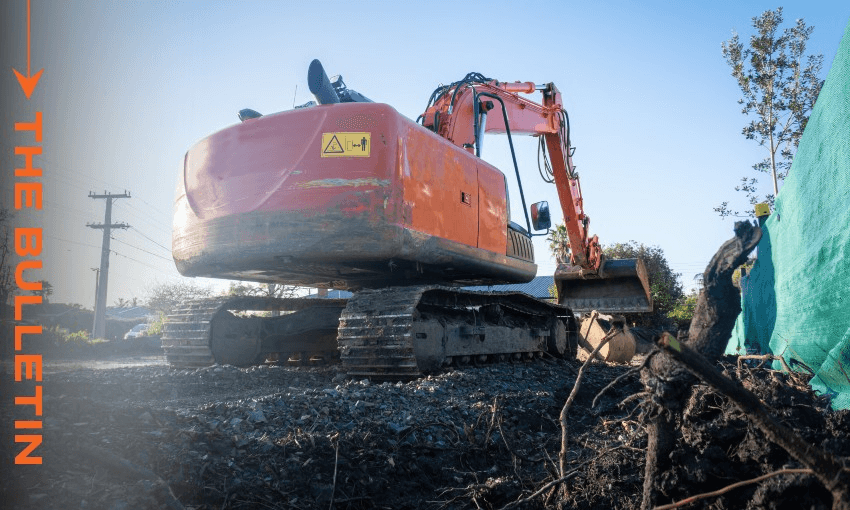In this extract from The Bulletin by Stewart Sowman-Lund: What Australia can teach us about secondary housing as a means to address our own property shortfall. To receive The Bulletin in full each weekday, sign up here.
Building up in the backyard
Back in February, housing minister Chris Bishop may have struck fear into the hearts of some homeowners when he said he hoped house prices would drop to a mere three to fives times the average household income, compared to the current nationwide average of 6.6. He didn’t want it to happen overnight, as he told RNZ’s Checkpoint at the time, but over the next couple of decades. How does he believe it will happen? Making it easier to build more houses. Yesterday, there was some movement on this, with the government announcing it would fulfil a pledge in the New Zealand First coalition agreement to consult on allowing granny flats to be built without consents, as Interest’s Dan Brunskill explained here. Acting prime minister Winston Peters said the amendment, which would apply to flats smaller than 60 square metres and one story in height, would make it more affordable for families to live the way “that best suits them”. A discussion document’s been released alongside the proposal, noting that “many district plans already allow granny flats without resource consent, but there’s a lack of consistency and different standards across the country.”
There’s history here
While the proposal may have initially come from New Zealand First, the National Party has previously cited granny flats or small secondary dwellings as one way of countering our housing crisis. Almost eight years ago, Tim Murphy reported for The Spinoff on a speech by then-prime minister John Key where he “raised the prospect of introducing rules for new ‘granny flats’ to be built on the back of Housing New Zealand sites so older tenants could stay while new families took the bigger home”. Then, in 2021, when Labour and National came together on the (since scrapped) cross-party housing density rules, Bernard Hickey reported that Nicola Willis had cited granny flats as one reason the proposal would be positive even for those concerned about increased housing. The new proposal is open for consultation until August, and likely won’t be made law until the middle of next year – but will it even work?
Could second dwellings really help address our housing crisis?
The government’s proposal would see “minor residential units” able to be constructed without resource consent. Bishop told reporters they would still need to meet the building code and be constructed by (or with supervision from) a registered builder, pushing back at a question about whether we might see a repeat of the “leaky homes” scandal. In 2020, a Stuff report asked if building a small secondary property could be the “silver bullet” to the housing supply problem, claiming it was the expensive and inflexible subdivision process that prevented many homeowners from actually doing it. In 2018, for example, a Christchurch local told Stuff’s Tina Law she was “flabbergasted” at the $23,000 of consenting costs involved in putting a small flat on her property for her 76-year-old brother.
We can look to Australia for some indication of whether secondary properties can help address housing shortfalls, given we’re just catching up in this area. The Guardian reported last December that granny flats have been seen as a solution to the housing crisis. One housing provider in Queensland said that secondary dwellings were a “valuable addition” to the housing market, especially for younger people who may otherwise be unable to get on the ladder. But an expert said there was a problem in framing granny flats as an affordable housing solution. “It might be part of the solution, but you’d rather go for a higher-density, more planned approach,” she said, in reference to cities like Sydney and Melbourne. Housing providers and the Labour Party have welcomed our government’s proposal, reported RNZ, though Kieran McAnulty said there were questions still to be answered.
It’s part of a bigger plan
In recent months, the government has made it clear it hopes to tackle the cost of building new homes as a way of allowing more properties to be built. The Post’s Miriam Bell reported in February that building and construction minister Chris Penk planned to look at the different elements that contribute to higher costs, and work out what could be done to alleviate them. “Some quick, easy wins in this space will be possible, particularly in areas where changes are in train already, but other reforms will need systemic change,” he said. After making the shock announcement that it would be scrapping the first home grants, something we’ve talked about extensively in recent weeks, Bishop argued buyer support would be unnecessary if houses became more affordable, something TVNZ’s Jack Tame looked at here. Much like the granny flat debate, Australia has been grappling with this argument as well. Earlier this month, reported BusinessDesk’s Maria Slade (paywalled), the government announced it would be streamlining the consent pathway for foreign investors to acquire land for build to rent developments, such as a large facility recently opened in Auckland.
And returning to the housing minister’s view on whether house prices need to drop, Bishop gave an even more succinct answer when asked yesterday, reports the Herald’s Thomas Coughlan. “Yes”. That’s a rare comment for a housing minister. Whether it happens, it’s a matter of wait and see.
